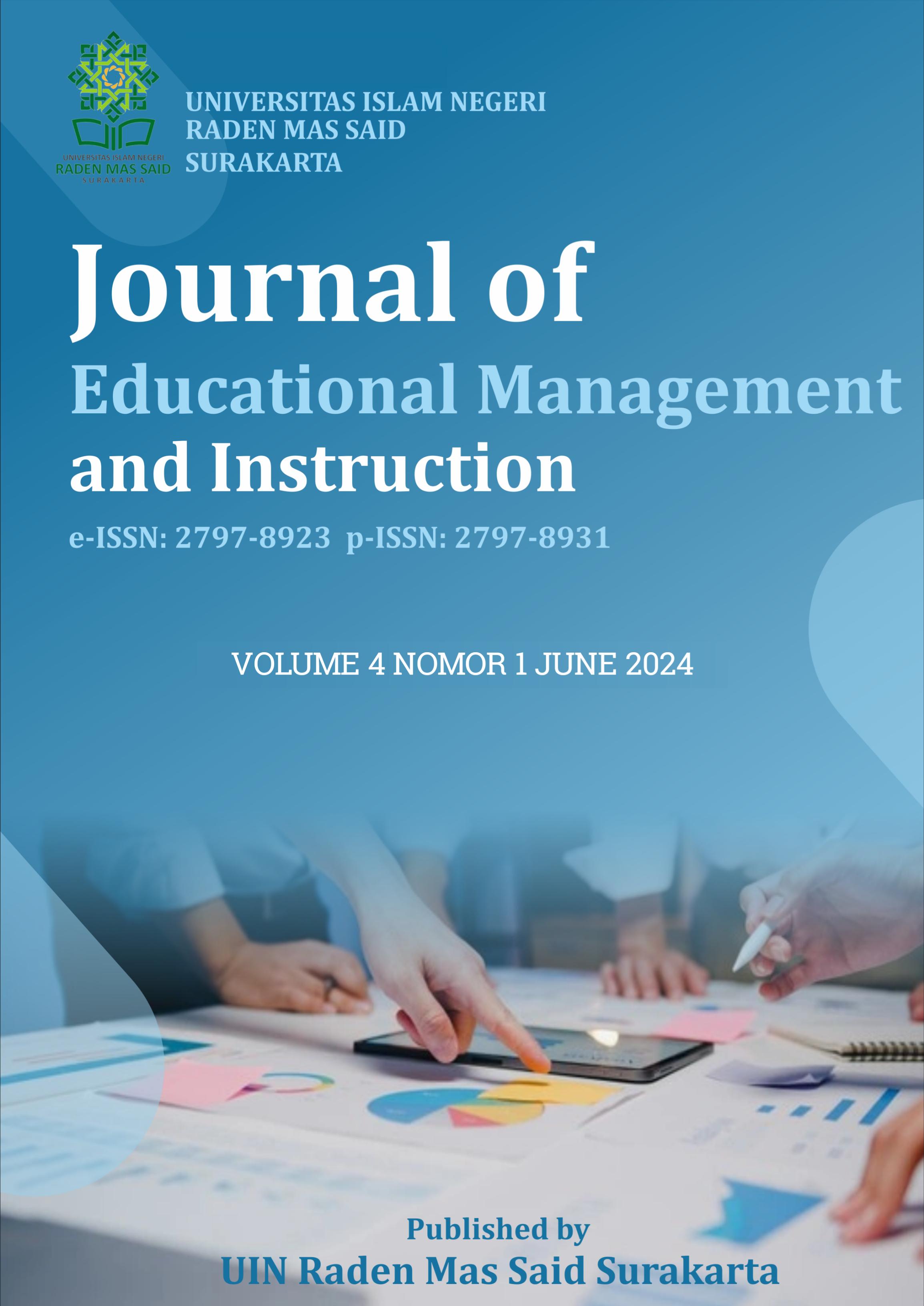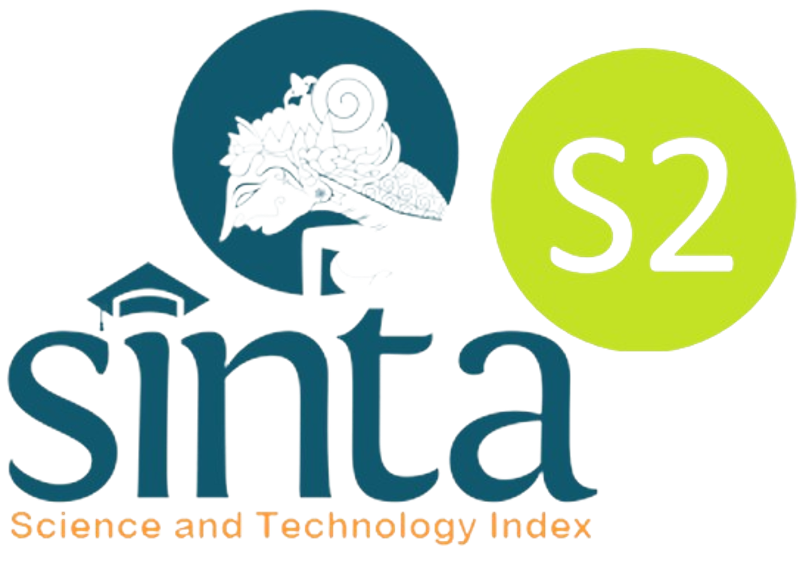Developing worksheet-based 7E learning cycle to foster elementary school students’ critical and creative thinking skills
DOI:
https://doi.org/10.22515/jemin.v4i1.9659Keywords:
Elementary School Worksheets, Critical Thinking Skills , Creative Thinking Skills, 7E Learning CycleAbstract
Enhancing students' critical and creative thinking skills is a crucial objective in education. Numerous studies have explored effective teaching methods to foster these skills, with models such as Problem-Based Learning (PBL), the STEM-5E Learning Cycle, and the 7E Learning Cycle showing significant promise. This study aims to develop and validate a worksheet designed to enhance critical and creative thinking in elementary school students using the 7E Learning Cycle, following the ADDIE instructional design model. The study was conducted with fourth-grade students at SDN 1 Pasir Gintung, Lampung province of Indonesia, with two classes serving as the sample: Class IV A as the experimental group and Class IV B as the control group. Product validation indicated a high level of effectiveness, with a material average score of 0.833, a language component score of 0.693, and a media aspect score of 0.917. The test tool, validated as part of the research product, achieved an average score of 0.733. Instructor feedback was overwhelmingly positive, with a 98% approval rate, while student feedback indicated a 94% satisfaction rate, both underscoring the product's practical value. Post-test results from the experimental group demonstrated a significant improvement in critical and creative thinking skills, with an average score of 89.49, markedly higher than the control group. These findings provide empirical evidence supporting the effectiveness of the 7E Learning Cycle in enhancing critical and creative thinking through the use of the developed worksheet in educational settings.
Downloads
References
Adam, U. A., Lameed, S., & Ayodele, B. B. (2022). Attaining meaningful learning of ecological concept: a test of the efficacy of 7E learning cycle model. GPH-International Journal of Educational Research, 5(04), 18-29. https://doi.org/10.5281/zenodo.6790327
Adilah, D. N., & Budiharti, R. (2015). Model Learning Cycle 7E Dalam Pembelajaran IPA Terpadu. Prosiding Seminar Nasional Fisika Dan Pendidikan Fisika (SNFPF) Ke-6, 6, 212–217.
Adirilany. (2023). Pengawasan Pembelajaran yang Berpusat pada Siswa di Era Society5.0. Proceedings Series of Educational Studies, 1(1), 359–367. https://doi.org/10.17977/um083.7903
Anjelina, Y., Supriadi, S., Musril, H. A., & Okra, R. (2023). Pengembangan Media Promosi Lembaga Pendidikan Menggunakan Papan Informasi Digital di MAN 1 Padangsidimpuan. ANTHOR: Education and Learning Journal, 2(3), 363–371. https://doi.org/10.31004/anthor.v2i3.148
Ataizi, M., & Donmez, M. (2020). Book Review: 21st Century Skills - Learning for Life in Our Times. Contemporary Educational Technology, 5(3), 272–274. https://doi.org/10.30935/cedtech/6129
Baharin, N., Kamarudin, N., & Manaf, U. K. A. (2018). Integrating STEM Education Approach in Enhancing Higher Order Thinking Skills. International Journal of Academic Research in Business and Social Sciences, 8(7), 810–821. https://doi.org/10.6007/ijarbss/v8-i7/4421
Balta, N., & Sarac, H. (2016). The effect of 7E learning cycle on learning in science teaching: A meta-analysis study. European Journal of Educational Research, 5(2), 61-72. https://doi.org/10.12973/eu-jer.5.2.61
Bialik, M., Fadel, C., Trilling, B., Nilsson, P., & Groff, J. (2015). 21st Century Skills: What should students learn? Center for Curriculum Redesign, 1(1), 1–129. https://curriculumredesign.org/wp-content/uploads/CCR-Skills_FINAL_June2015.pdf
Branch, R. M. (2009). Instructional Design: The ADDIE Approach. In Instructional Design: The ADDIE Approach (New York). Springer. https://doi.org/10.1007/978-0-387-09506-6
Budi, T. P. (2006). SPSS 13.0 Terapan: Riset Statistik Parametrik. Yogyakarta: Andioffse.
Fajria, I., Putri, D. H., & Setiawan, I. (2023). Pengembangan Lembar Kerja Peserta Didik (Lkpd) Kinematika Gerak Lurus Pada Sma Menggunakan Learning Cycle 7E Untuk Melatihkan Keterampilan Berpikir Kritis Siswa. Amplitudo : Jurnal Ilmu Dan Pembelajaran Fisika, 2(2), 151–160. https://ejournal.unib.ac.id/jipf/article/view/18833
Firdaus, F., Priatna, N., & Suhendra, S. (2017, September). An implementation of 7E learning cycle model to improve student self-esteem. In Journal of Physics: Conference Series (Vol. 895, No. 1, p. 012084). IOP Publishing. https://doi.org/10.1088/1742-6596/895/1/012084
Ilhami, R., & Laksono, E. W. (2022). 7E Learning Cycle Model Implementation: Students' Activities and Critical Thinking Skills towards Online Learning. Universal Journal of Educational Research, 10(5), 311-317. https://doi.org/10.12189/ujer.2022.100501
Mahanal, S., & Zubaidah, S. (2017). Model Pembelajaran Ricosre Yang Berpotensi Memberdayakan Keterampilan Berpikir Kreatif. JUrnal Pendidikan, 2(5), 676–685. http://journal.um.ac.id/index.php/jptpp/
Marfilinda, R., Rossa, R., Jendriadi, J., & Apfani, S. (2020). The effect of 7e learning cycle model toward students' learning outcome of basic science concept. Journal of teaching and learning in Elementary Education, 3(1), 77-87. http://dx.doi.org/10.33578/jtlee.v3i1.7826
Maskur, R., Latifah, S., Pricilia, A., Walid, A., & Ravanis, K. (2019). The 7E learning cycle approach to understand thermal phenomena. Jurnal Pendidikan IPA Indonesia, 8(4), 464-474. https://doi.org/10.15294/jpii.v8i4.20425
Mitchell, I. K., & Walinga, J. (2017). The Creative Imperative: The Role of Creativity, Creative Problem Solving and Insight as Key Drivers for Sustainability. Journal of Cleaner Production, 140, 1872–1884. https://doi.org/10.1016/j.jclepro.2016.09.162
Novalia, & Syazali, M. (2014). Olah Data Penelitian Pendidikan. Lampung: Anugrah Utama Raharja (AURA).
Novianti, A. (2014). Pengaruh Model Pembelajaran Learning Cycle Terhadap Keterampilan Berpikir Kritis Siswa. Edusains, 6(1), 109–116. https://doi.org/10.33394/bioscientist.v12i1.9992
Parno, E. S., Yuliati, L., Widarti, A. N., Ali, M., & Azizah, U. (2019). The influence of STEM-based 7E learning cycle on students critical and creative thinking skills in physics. International Journal of Recent Technology and Engineering (IJRTE), 8(2), 761-769. https://doi.org/10.35940/iirte.B1158.0985S919
Parno, Putri, M. K., Munfaridah, N., Khusaini, Fitri, N., & Ali, M. (2024). Exploration of Students’ Scientific Literacy in Work and Energy Through STEM-based 7E Learning Cycle with Formative Assessment. Journal of Physics: Conference Series, 2684(1). https://doi.org/10.1088/1742-6596/2684/1/012004
Perdana, R., Budiyono, ., Sajidan, ., & Sukarmin, . (2019). Analysis of Student Critical and Creative Thinking (CCT) Skills on Chemistry: A Study of Gender Differences. Journal of Educational and Social Research, 9(4), 43–52. https://doi.org/10.36941/jesr-2019-0006
Redhana, I. W. (2013). Model Pembelajaran Berbasis Masalah Dan Pertanyaan Socratik Untuk Meningkatkan Keterampilan Berpikir Kritis Siswa. Jurnal Cakrawala Pendidikan, 3, 351–365. https://doi.org/10.21831/cp.v0i3.1136
Shesilya, & Aloysius, S. (2023). Development of E-worksheet of Coordination System in Human Based on Learning Cycle 7E to Improve Critical Thinking Ability and Student Motivation. Jurnal Penelitian Pendidikan IPA, 9(12), 11568–11575. https://doi.org/10.29303/jppipa.v9i12.5907
Sholihah, M., & Amaliyah, N. (2022). Peran Guru Dalam Menerapkan Metode Diskusi Kelompok Untuk Meningkatkan Keterampilan Berpikir Kritis Siswa Kelas V Sekolah Dasar. Jurnal Cakrawala Pendas, 8(3), 898–905. https://doi.org/10.31949/jcp.v8i3.2826
Sofiani, N., Frinaldi, A., Magriasti, L., & Wahyuni, Y. S. (2024). Kebijakan Desentralisasi Pendidikan Serta Implmentasi Dalam Pendidikan di Indonesia. Menara Ilmu, 18(1), 118–127. https://doi.org/10.31869/mi.v18i1.5273
Suardana, I. N., Redhana, I. W., Sudiatmika, A. A., & Selamat, I. N. (2018). Students' Critical Thinking Skills in Chemistry Learning Using Local Culture-Based 7E Learning Cycle Model. International Journal of Instruction, 11(2), 399-412. https://eric.ed.gov/?id=EJ1174908
Surapranata, S. (2009). Analisis, Validitas, Reliabilitas dan Interpretasi Tes. Bandung: Remaja Rosda Karya.
Suryaningsih, S., & Nurlita, R. (2021). Pentingnya Lembar Kerja Peserta Didik Elektronik (E-LKPD) Inovatif dalam Proses Pembelajaran Abad 21. Jurnal Pendidikan Indonesia, 2(7), 1256–1268. https://doi.org/10.36418/japendi.v2i7.233
Turgut, U., Colak, A., & Salar, R. (2017). How is the learning environment in physics lesson with using 7e model teaching activities. European Journal of Education Studies, 3(6), 1-28. http://dx.doi.org/10.46827/ejes.v0i0.712
Tsai, K. C. (2013). Being a Critical and Creative Thinker: A Balanced Thinking Mode. Asian Journal of Humanities and Social Sciences (AJHSS), 1(2), 1–9. www.ajhss.org
Twiningsih, A., & Retnawati, H. (2023). Keterampilan Berpikir Kritis Dan Kreatif Dalam Pembelajaran Ipa Pada Siswa Kelas Iv Di Sd. Jurnal Penelitian Bidang Pendidikan, 29(1), 1-8. https://doi.org/10.24114/jpbp.v29i1.38220
Yennita, Astriawati, F, & Jumiarni, D. (2023). Learning Cycle 7E: Efektivitasnya dalam Meningkatkan High Order Thinking Skills (HOTS) Mahasiswa pada Mata Kuliah Anatomi Tumbuhan. Diklabio: Jurnal Pendidikan Dan Pembelajaran Biologi, 7(1), 124–132. https://doi.org/10.33369/diklabio.7.1.124-132
Downloads
Submitted
Accepted
Published
How to Cite
Issue
Section
License
Copyright (c) 2024 Ryzal Perdana, Helvi Yanfika, Ridho Sholehurrohman, Winda Annisha Bertiliya

This work is licensed under a Creative Commons Attribution-NonCommercial 4.0 International License.
Copyright
Copyright aims to protect the specific way the article has been written to describe an experiment and the results. Journal of Educational Management and Instruction is committed to its authors to protect and defend their work and their reputation and takes allegations of infringement, plagiarism, ethical disputes, and fraud very seriously. Automotive Experiences is published under the terms of the Attribution-NonCommercial 4.0 International (CC BY-NC 4.0). Authors retain copyright and grant the journal right of first publication (online and print) with the work simultaneously. We use the restrictive license (non-commercial) as follows:
BY (attribution): Users are allowed to share, distribute and redistribute the published article in any medium or format, with an identification of the authors and its initial publication in this journal. Authors are encouraged to post and distribute their articles immediately after publication (e.g., institutional or public repositories, personal websites). Authors are allowed to enter into additional contractual arrangements for the non-exclusive distribution of the published and an acknowledgment of its initial publication in this journal.
NC (non-commercial): Users are not allowed to use the article commercially without the permission of the authors. Authors agree explicitly that the published article is indexed worldwide in databases, repositories and indexation services, even if these services operate on a commercial basis. Authors grant Journal of Educational Management and Instruction explicit the right to include the published articles in databases, repositories and indexation services.
License
License to Publish
The non-commercial use of the article will be governed by the Attribution-NonCommercial 4.0 International (CC BY-NC 4.0). The author hereby grants Journal of Educational Management and Instruction an exclusive publishing and distribution license in the manuscript include tables, illustrations or other material submitted for publication as part of the manuscript (the “Articleâ€) in print, electronic and all other media (whether now known or later developed), in any form, in all languages, throughout the world, for the full term of copyright, and the right to license others to do the same, effective when the article is accepted for publication. This license includes the right to enforce the rights granted hereunder against third parties.
Author's Warranties
The author warrants that the article is original, written by stated author/s, has not been published before, contains no unlawful statements, does not infringe the rights of others, is subject to copyright that is vested exclusively in the author and free of any third party rights, and that any necessary written permissions to quote from other sources have been obtained by the author(s).
User Rights
Under the Creative Commons Attribution-Non Commercial 4.0 International (CC BY-NC 4.0) license, the author(s) and users are free to share (copy and redistribute the material in any medium or format) and adapt (remix, transform, and build upon the material). Users must give appropriate credit, provide a link to the license, and indicate if changes were made.
Rights of Authors
Authors retain the following rights:
- Copyright, and other proprietary rights relating to the article, such as patent rights,
- The right to use the substance of the article in future own works, including lectures and books,
- The right to reproduce the article for own purposes, provided the copies are not offered for sale, and
- The right to self-archive the article.
Co-authorship
If the article was prepared jointly with other authors, the signatory of this form warrants that he/she has been authorized by all co-authors to sign this agreement on their behalf, and agrees to inform his/her co-authors of the terms of this agreement.

























